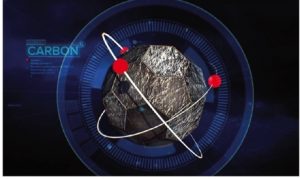![]() Heat Treat Today publishes four print magazines a year, and included in each is a letter from the publisher, Doug Glenn. This letter first appeared in Heat Treat Today‘s Medical & Energy Heat Treating magazine, December 2019
Heat Treat Today publishes four print magazines a year, and included in each is a letter from the publisher, Doug Glenn. This letter first appeared in Heat Treat Today‘s Medical & Energy Heat Treating magazine, December 2019

The fingers of heat treat reach into nearly every area of our life. Some of the effects of heat treating are obvious, like the landing gear on an airplane that is able to take repeated high-impact landings without snapping in two. There are other effects of heat treating that are not as obvious but are no less important. Take for example the amazing things that go on inside that same airplane’s jet engines at super-high temperatures and super high stress and strain levels. The jet engine is a modern marvel usually taken for granted by millions of travelers each day.

earth to the surface with essentially zero losses.
Some of the effects of heat treating are mundane. One of my favorite examples of a very practical and understandable heat treatment is the annealing process for aluminum foil. “Why is it,” I ask, “that you are able to bend this thin sheet of metal and yet it doesn’t shatter, break, or even crack?” Answer: heat treat–specifically, foil annealing.
In this issue, we take a look as some rather fascinating heat treatments in the medical and energy industries. It’s not that these two industries have anything to do with each other; they really don’t. In fact, much of what is done in the medical industry is done in vacuum furnaces in cleanroom settings. Energy heat treatments, on the other hand, can be done in a vacuum, especially when stainless steels or other more exotic materials are used (think nuclear reactors), or they can be done in the down and dirty atmosphere furnaces and oil quench tanks. But they are both heat treat-intense industries and both worthy of some attention–thus we’ve combined them into one issue.
Pulling Energy from the Earth’s Core
One of the more fascinating “heat treat” applications is the emerging possibility of being able to extract what appears to be an infinite supply of energy from the earth’s core using a material that will transfer the energy from the core to the surface with essentially zero losses. The material capable of doing this is graphene, and the graphene is currently made in vacuum furnaces. In fact, there are a number of vacuum furnace companies in the heat treat industry that are dabbling in this field.
The ability to extract energy from the core of the earth with essentially zero losses is the focus of the Limitless Energy Graphene Project headed by Manoj Bhargava and Ravi Sajwan. These gentlemen propose to transfer energy from roughly 4.5+ miles below our feet to the surface by using graphene, which is 100-times better at conducting than copper, lighter than air, and stronger than steel.
It transfers heat ultra-efficiently. According to Mr. Sajwan, if you apply 100°F to one end of a graphene pathway, you’ll instantly get 100°F heat at the other end of the pathway, but the middle of the pathway will remain perfectly cool. What they’re describing is 100% heat transfer with zero transmission losses. And according to Mr. Bhargava, you can go 10 feet or 10 miles, and the result is the same.
The temperature 4.5 miles below our feet ranges anywhere from 1,000°F to 7,000°F. Imagine being able to dig just deep enough to reach temperatures capable of boiling water and bring those temperature to the surface to fuel electricity-creating, steam-powered turbines.

If you’re not familiar with graphene, go to “The Google” and search for “What is graphene?” You’ll have no problem finding many explanations. I suggest looking for a short video from the University of Manchester.
CLICK HERE to be taken to an amazing YouTube video entitled, “5 Amazing Renewable Energy Ideas & Solutions for the Future.” HTT





